Why Portion Sizes Are Getting Smaller At Restaurants
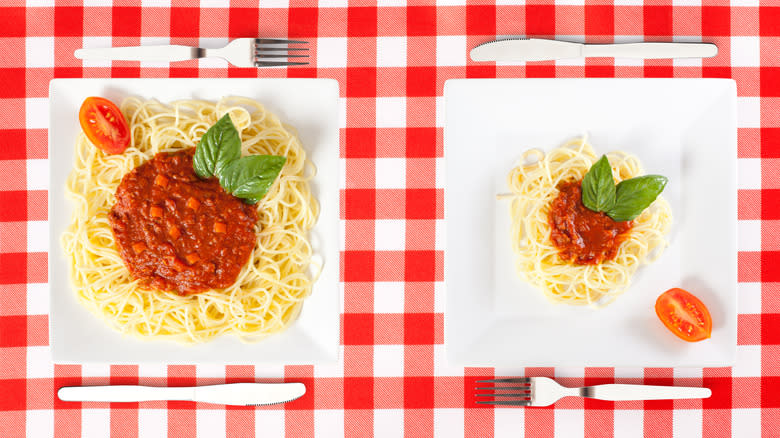
Supersizing has been among the most popular culinary size trends, but the era of downsized portions seems to be upon us. If you're worried these smaller portions are going to leave you hungry, you're not alone. Some diners question whether less is truly more. However, others have embraced the new trend since it's more in line with the way they prefer to eat.
When many of us see smaller portion sizes at restaurants, we blame shrinkflation. However, there are other reasons restaurants are likely to give you smaller food portions. Sure, a lot of it likely relates to profits. However, other explanations may involve consumer demands, food trends, and environmental concerns. So, the justification for food portion sizes getting smaller at restaurants may be more multifaceted than you initially thought. Let's take a deep dive into the world of the shrinking plate to uncover more of the motives behind this portion-size evolution. After all, we think it's here to stay.
Read more: Ingredients To Take Your Scrambled Eggs To The Next Level
Shrinkflation Has Come Into Play
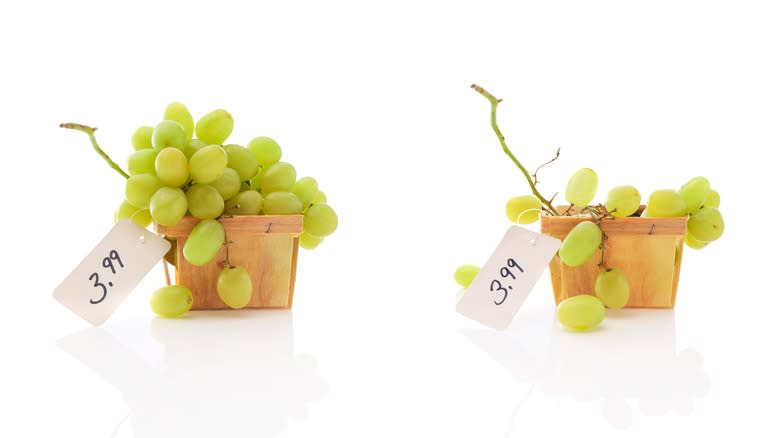
Shrinkflation is showing up everywhere from the grocery store aisle to your favorite restaurant. If you're not familiar with the word "shrinkflation," it's a wordplay on the concept of shrinking portion sizes related to inflation. Restaurants that aren't raising their food prices as high are often compensating by providing smaller portions. The idea is that customers are less likely to get upset about a slightly smaller portion than a higher price. At a certain price point, potential customers decide they're better off eating at home. So, it's become a way for restaurants to hopefully keep customers coming in the door.
As the price of groceries has increased, so has the cost of restaurant meals. According to the U.S. Inflation Calculator, the average cost of food has increased nearly 4.3% between August 2022 and August 2023, the most recent data available. That follows a 10.4% increase in calendar year 2022 and a 6.3% increase in 2021. Among restaurants, the states seeing the most inflation are Colorado, Arizona, Arkansas, Nevada, and Wisconsin, where meal costs increased between 21% and 24% just in the six months between November 2022 and June 2023 (per USA Today).
Shinkflation is even happening in fast food. Domino's, Popeyes, Zaxby's, Arby's, Taco Bell, McDonald's, Burger King, Five Guys, Subway, Chick-fil-A, and Wendy's have all been receiving shrinkflation complaints from consumers.
Food Companies Are Protecting Profits

Inflation isn't all that is at play here. Sometimes, it's pure profitability. Food companies want not just to reach the level of past profits, but also to exceed them. There are plenty of ways they're working toward being more profitable, and smaller portions are among them. Certainly, providing smaller portions helps maintain profit margins for small mom-and-pop restaurants. But that's not what's happening in every case. If you look at how much some bigger companies are bringing in, providing smaller portions for more money feels like a game of bait and switch.
As global strategist Albert Edwards told The New York Times, "Companies are not just maintaining margins, not just passing on cost increases, they have used it as a cover to expand margins." Several companies with shrinkflation complaints are among the ones bringing in the most revenue, like McDonald's (No. 1), Chick-fil-A (No. 3), Taco Bell (No. 4) Wendy's (No. 5), Subway (No. 7), Burger King (No. 8), Domino's (No. 9), Popeyes (No. 16), Arby's (No. 18), Zaxby's (No. 27), Five Guys (No. 29), according to the 2023 rankings of fast food restaurants from QSR Magazine based on annual sales. So, they're certainly not hurting.
There's A Drive To Reduce Food Waste
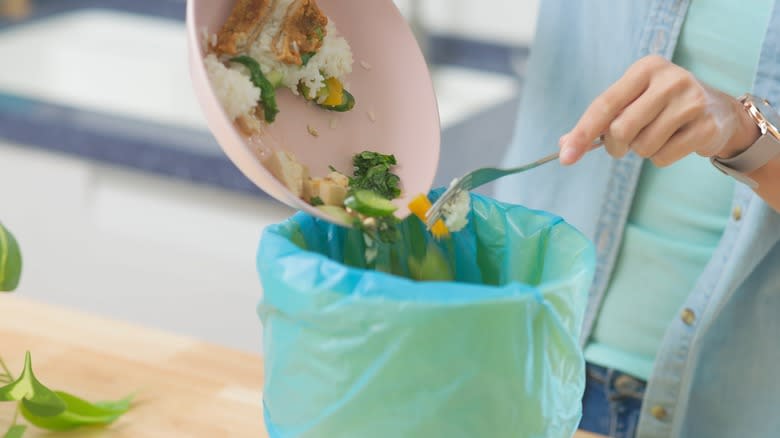
A ridiculous amount of food gets wasted in the U.S. every year. Thus, restaurants seeking to keep up with eco-friendly trends are looking beyond green packaging and sustainable food sources. They want to reduce food waste as well. There's plenty of technology out there to help. However, one of the lower-tech strategies is offering smaller portions.
The U.N. states, "An estimated 17% of total global food production is wasted in households, in the food service and in retail all together." According to the U.S. Food and Drug Administration, "food loss at the retail and consumer levels corresponded to approximately 133 billion pounds and $161 billion worth of food in 2010." The agency has since teamed up with the Environmental Protection Agency and U.S. Department of Agriculture to help reduce food waste.
Smaller portions do make a difference. One study in the International Journal of Obesity found that about 10% of people were willing to buy smaller portions even if it cost more money. A separate case study in Marketing Science reported that when smaller portions were available, sales of the full-sized item went down by nearly 41% as people chose the lesser amount. All of these smaller portions ended up reducing food waste. For restaurants, this could translate into spending less on buying food in the first place that doesn't get eaten as well as spending less on disposing of the waste.
More Consumers Are Health-Conscious
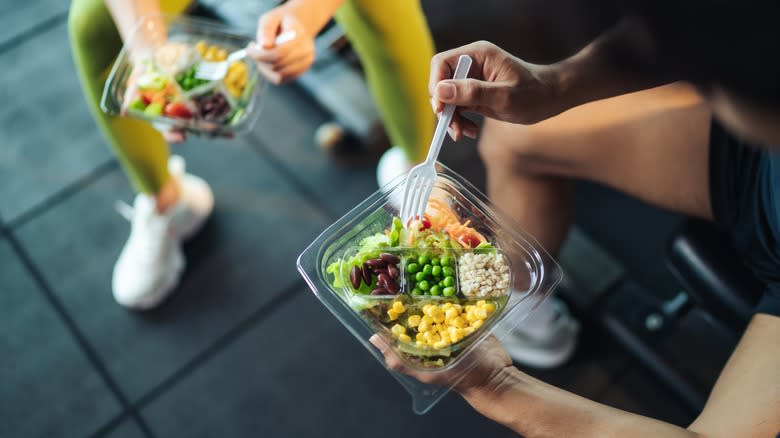
According to a 2022 poll commissioned by Nutrisystem and conducted by OnePoll, 71% of U.S. adults said they were more health conscious than they were before the COVID-19 pandemic, the New York Post reported. Many people gained weight from staying home more. About 61% of adults surveyed were looking toward a more healthy lifestyle. Even before the pandemic, younger generations were making healthier food choices.
When people are watching their caloric intake or the amount of fat, cholesterol, or salt in their food, they're more likely to look to smaller portions. That means people are less likely to visit a restaurant where they know all the burgers are doubles and the small drinks and sides served today are the equivalent of a large from yesteryear.
A smaller portion allows more health-conscious consumers to get a taste of the foods they crave but not feel bad about over-indulging. For example, an order of large fries on the McDonald's menu comes in at 480 calories, but the kid-size portion is just 110 calories.
Consumers Want Smaller Portions
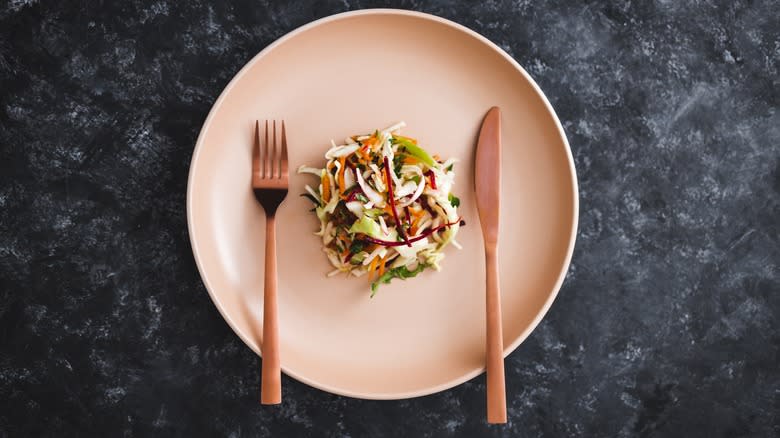
The average size of restaurant portions has crept up over the past few decades. With the change in portion sizes, the calorie count has gone up, too, leading many customers to wish restaurants would stop supersizing food.
U.S. restaurant portion sizes are often notoriously huge. While some consumers like large portions, a 2022 Georgetown University study found that 62% of respondents wish restaurants would offer standard portions. In addition, 58% of respondents said they have begun eating smaller portions to help manage their weight. A 2021 study by the International Food Information Council (IFIC) found that 31% of respondents control their food consumption by specifically choosing smaller portions with just one serving. Some restaurant-goers even go as far as to put half of their meal in a to-go box before they start eating so they can better control portions.
However, not everyone wants leftovers. One Redditor, u/Queen_Inappropria, says they wish restaurants had the "same tasty food in smaller portions for people between child and senior menu ages." Redditor u/bekahbaka notes that man restaurant meals have more calories than some people should eat in a day. "No wonder I can't ever finish my food! I feel so wasteful but like ... How am I supposed to eat all of that in one sitting?" Redditor u/Katdai2 goes as far as to say, "I hate going out to eat because the portions are just unmanageable."
Consumers Want Less Meat In Their Meals
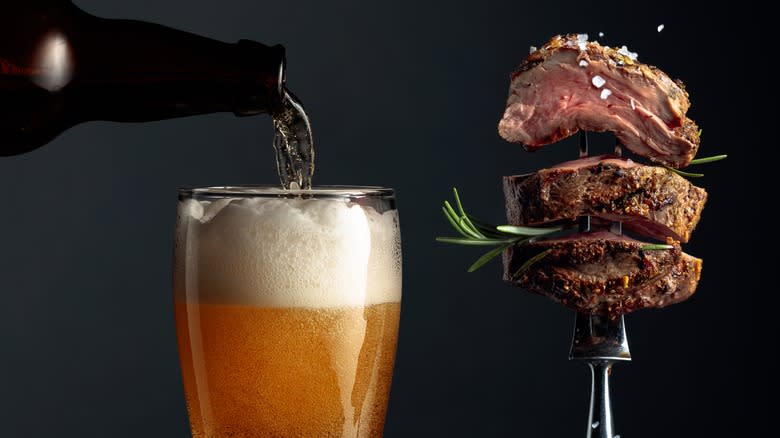
Another phenomenon affecting smaller portions is consumers who want less meat in their meals. They don't want to go vegetarian or vegan for health or environmental purposes. Instead, they're looking for smaller portions of meat in their meals. Consuming less meat is one of the best ways people have found to reduce their environmental footprint and act on their concern for animal welfare. Arlin Wasserman from Changing Tastes says, "Shifting the portion of meat and plant-based ingredients on the plate seemed easier to get a lot of people to eat a bit less meat rather than to convince even a small share to eat vegetarian meals" (per FSR Magazine).
According to Changing Tastes, "Americans don't want to eat meat less often, they're just asking for smaller portions." The organization found 43% of those surveyed wanted smaller meat portions, and when given an example of a Mediterranean bowl, 55% said an ounce or two of meat to go with the rest of the ingredients would be considered an entree. With the U.S. Department of Agriculture's current food pyramid suggestion of 5.5 ounces of meat and other proteins per day, just eating an ounce or two of meat per meal makes sense.
Smaller Portions Get Customers To Splurge On Other Menu Items

One way restaurants trick you into spending more money is to offer smaller portions. According to Wharton marketing professor Lisa E. Bolton, when "someone orders a healthful option, they will splurge on dessert or another glass of wine. You may be less likely to order fries, but you will order that chocolate cake if you deny yourself something in one area." Customers may order something extra to reward themselves for being good and eating healthier. Or perhaps with a smaller portion they don't feel overly full so they're more likely to justify dessert. And if every item on the menu comes in small portions, customers may be more likely to go for three courses instead of just an entree.
Back in 2007, T.G.I. Friday's started a new trend of catering to those more conscious about portion size with its "Right Portion, Right Price" menu. It didn't label the options as "healthy," which tends to make customers assume they wouldn't be as tasty. Instead, these were regular entrees with one third of the original portion size offered at one third of the price. But T.G.I. Friday's wasn't quiet about the monetary reason for its new smaller entrees. Its advertisements reminded customers that "smaller portions allow more room for dessert." It's really all about upselling, just in a sneakier way.
Some Small Portions Promise A Gourmet Experience
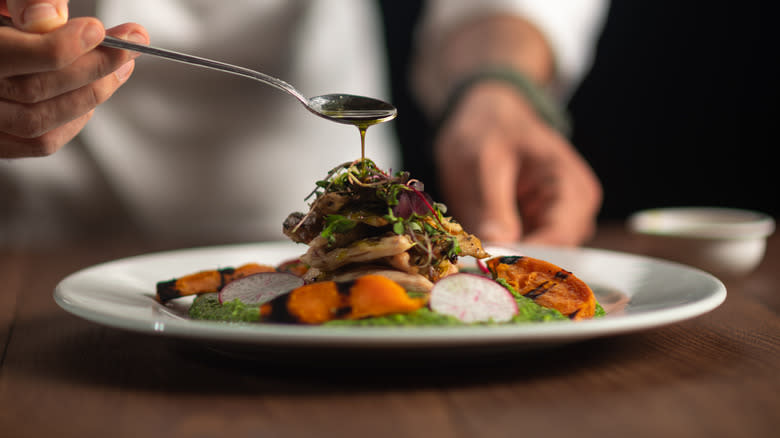
Some restaurants have also found that they can get away with serving smaller portions if they promise a gourmet experience from their food. You'll see this phenomenon both on regular menus and tasting menus.
INSEAD Knowledge did an experiment where it showed study participants six photos of chocolate cake with different descriptions. One cake promised a more sensory-loaded gourmet experience: "The chocolate has a smell of roasted coffee, bitter-sweet balance taste, with natural aromas of honey and vanilla and a light aftertaste of blackberry." Participants tended to be willing to choose smaller pieces of the gourmet cake and be willing to spend more for it than for the larger portion of dessert simply listed as "chocolate cake."
When restaurants use high-quality ingredients, serving larger portions can also make menu items cost-prohibitive. However, when a dish is smaller and contains expensive ingredients like truffles, caviar, or a type of ham called jamon Iberico, the restaurant can still make a profit at a price that diners can afford.
Small Plates Have Become Trendy
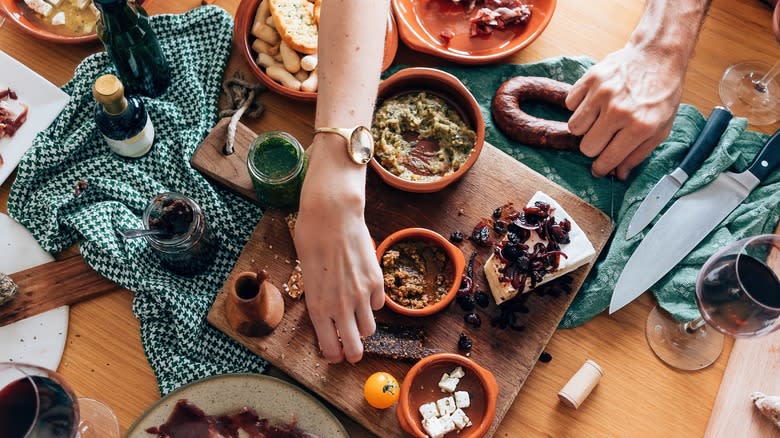
Small plates, small bites, tapas, and tasting menus have become trendy in the last few years. These portions are perfect for just one person or for sharing. When they make up the entirety of the meal, it allows for a slower grazing style of eating rather than chowing down on a large entree. With small plates as a menu option, customers can mix or match several dishes to create a full meal with a variety of different tastes. However, if they prefer to eat a regular-sized entree, they can also order small plates as appetizers or a meal add-on.
Having small plates on the menu has proven advantageous for restaurants in a variety of situations. When there's only a small portion or the option to share food, people are more likely to splurge for an extra dish than when it's a huge portion. Additionally, when people come into a restaurant only intending to drink at the bar, having small plates available can help introduce them to the main menu, turning them into future food customers. Small plates can also help introduce customers to new foods they may not be sure enough about to order as a main entree. For example, a customer who has never had sushi before might be more willing to try a couple of pieces to see if they like it before committing to an entire roll.
There's Been A Rise In Snackification

In today's busy world, people aren't necessarily eating at set meal times. Instead, they're grabbing a quick bite to eat when they have a moment of free time or realize they're hungry. This idea of eating mini-meals or snacks rather than full meals has come to be known as "snackification." When Welch's surveyed millennials a few years ago, it found that 92% of them were eating a snack instead of a full meal at least once a week. They're eating these snacks at home, at their work desk, and in the car when they're too busy or just don't want to cook.
However, the snackification trend extends beyond items you think of as snacks like chips and cookies to mini-meals. Fast food restaurants like White Castle, which already have small options like sliders instead of full-sized hamburgers, are better poised to take advantage of the snacky eater. However, there's also a trend toward seeking out healthier mini-meals like bowls, smoothies, bento boxes, and mezze. These consumers are not necessarily buying food they hope to fill them the way a meal would, and they're often cost-conscious.
There Are More Solo Consumers

There was a time when people rarely ate alone in a restaurant unless they absolutely had to do so. However, several studies in recent years have found that an increasing number of adults eat their meals alone and without any company.
These days, people can occupy themselves with their cell phones instead of having to rely on small talk for entertainment. Or they can eat at the bar and watch the bartender for entertainment. As such, there's a growing number of customers who are going to restaurants alone so they don't have to pay for two meals, can eat exactly where they want, and don't have to buy dishes that they didn't really want to share with a picky eater. People are also dining alone because they want something right away, and they're busy.
Busy solo customers tend to focus on how much food they want at the moment and are not buying huge quantities of food; they're focusing on snacky mini-meals or small plates. And small plates appeal to the diner out for a more leisurely solo meal as well. One restaurant in New York City has been known for offering a Solo Diner's Week around Valentine's Day every year, providing a seven-course small dish tasting menu, a type of meal solo diners rarely try alone.
It Provides Value Menu Items For The Budget-Conscious

A lot of the smaller menu items at restaurants show up on value menus. Having smaller items with fewer ingredients allows restaurants to charge less, which is good news for both the health-conscious and the budget-conscious. Value menu items may often be smaller. For example, when you look at the Cravings Value Menu for Taco Bell, you'll find smaller items like the Cheesy Roll Up and Cheesy Bean and Rice Burrito priced at $1 to $2.
During times when the economy is not so great, having a menu with smaller portions allows restaurants to entice customers who may not be able to eat there otherwise. For example, during the 2009 recession, Ruth's Chris started offering 6-ounce filets and shrimp for $39.95, which got existing customers back in the door when they couldn't afford $50 or more for the same meal with a 12- or 16-ounce steak.
Something else a value menu does is to allow customers a chance to try something new. A customer may be more willing to try a small, less expensive portion of something new and different, and the restaurant is making a bet that the customer will like it enough to order a larger portion the next time around.
It Produces Repeat Customers Who Want To Satisfy A Craving
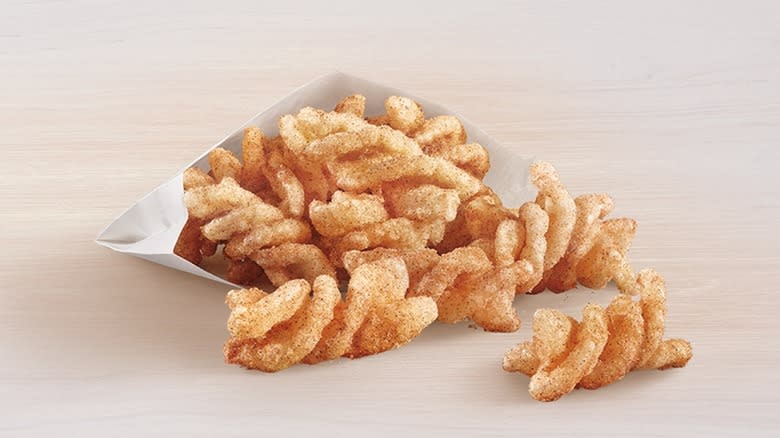
Several chains have pounced on the idea of offering bite-sized versions of its menu items to snag customers. This allows an option for customers who have a craving but aren't hungry enough or don't have time to stop in for a full-sized meal.
Maybe you don't want a whole pretzel when you smell them as you walk through the mall, but you'll stop by Auntie Anne's for a few Pretzel Nuggets since they're small and easier to share. And if you pass by fast food restaurants and are feeling snacky on the way home from work, you probably aren't hungry for a whole cinnamon roll or a milkshake. However, you might find yourself getting in the habit of swinging by Cinnabon for a few Bon Bites or Wendy's for a Jr. Frosty to satisfy your sweet tooth. Taco Bell even has a Cravings Value Menu, which offers smaller items you could grab, like Cinnamon Twists or a Spicy Potato Soft Taco.
Read the original article on Mashed.

